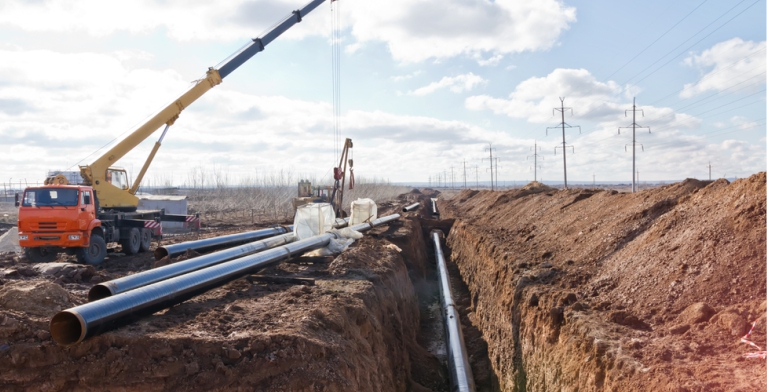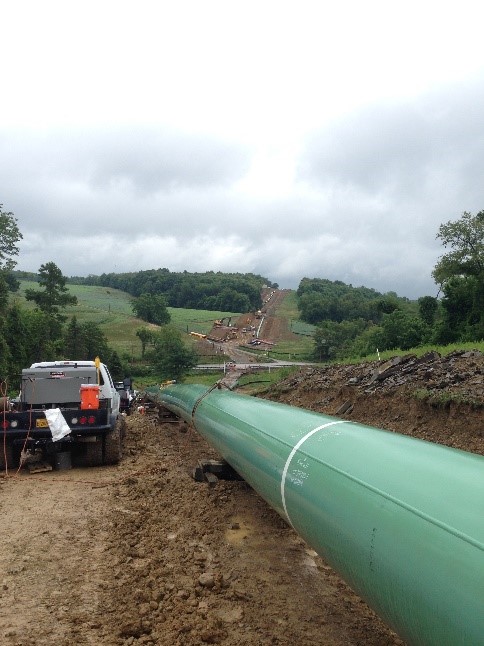How to Prepare When Hiring Creek Pipe roustabout Teams
Wiki Article
Understanding the Basics of Pipes Installation: What You Need to Know Concerning the Process
Proper pipe installation is important for any kind of pipes system. It needs mindful consideration of numerous factors, including product option and adherence to local guidelines. A well-planned design can stop concerns like stress loss, while the right devices assure effective joining techniques. Even experienced installers can make typical errors. Comprehending these basics can bring about an extra reliable and sturdy system, motivating a closer check out the crucial elements associated with the process.Picking the Right Materials for Pipe Installation
When considering pipe installation, the option of ideal products is vital to making certain sturdiness and capability. Various materials are available, each offering distinct advantages and considerations. For example, PVC pipes are lightweight, resistant to deterioration, and economical, making them ideal for property pipes. Alternatively, copper pipelines, recognized for their long life and capacity to stand up to heats, are often chosen for heating systems.Additionally, galvanized steel pipes give toughness and resilience, appropriate for heavy-duty applications, although they are at risk to corrosion over time.For below ground installments, polyethylene pipes are preferred due to their adaptability and resistance to tension breaking. Appropriate material selection depends on the certain needs of the job, consisting of pressure ratings, temperature level variations, and the chemical nature of the liquids being carried - Creek Pipe trenching services. Ultimately, educated choices relating to pipe products contribute greatly to the general success and durability of plumbing systemsComprehending Local Building Regulations and Rules
Exactly how can recognizing local building ordinance and regulations effect pipe installation? Experience with these codes is important for making sure that pipe installments are safe, compliant, and efficient. Local building regulations describe certain demands pertaining to products, installation strategies, and safety and security steps, which must be followed to avoid possible lawful problems and pricey fines.Failure to abide can cause evaluations being failed, delays in task completion, or even mandated removal of improperly mounted pipes. In addition, recognizing zoning legislations and laws can influence the sort of materials enabled, along with the approaches used for installation.Contractors and home owners alike ought to invest time in assessing neighborhood regulations prior to starting any installation task. This positive approach not only advertises security but likewise boosts the overall high quality and durability of the pipes system, eventually cultivating long-term performance and satisfaction.Preparation Your Pipe Design and Design
Correct planning of pipe layout and layout is necessary for accomplishing a reliable plumbing system. This procedure starts with assessing the certain demands of the space, thinking about the place of fixtures and devices. Exact dimensions assure that pipes are appropriately transmitted, decreasing bends and turns that can result in pressure loss.Consideration of the circulation rates and the types of materials utilized is vital, as various products have varying resilience and compatibility with pipes systems. In addition, the developer must represent future growths or alterations to the format, permitting for flexibility in instance of renovations.Efficient drainage and air flow are likewise significant elements of the design, as they protect against clogs and assure proper waste elimination. Partnership with neighborhood structure codes ensures compliance and security, which is vital in any type of pipes installation job.Necessary Tools and Tools for Installation
Effective pipe installation depends upon having the right devices and devices handy. Important devices consist of pipe cutters for clean cuts, wrenches for tightening installations, and pliers for grasping and transforming pipes. Additionally, a level guarantees pipelines are installed equally, while a gauging tape aids in accomplishing precise lengths.For details products, a welding torch may be needed for copper pipes, while a PVC cutter is essential for plastic alternatives. Security devices, such as handwear covers and safety glasses, protects installers from possible hazards throughout the process.A pipe bender can be especially helpful for developing smooth curves without jeopardizing honesty, while a torque wrench warranties that connections are protected to the manufacturer's specifications.Having these tools readily offered not just assists in a smoother installation process yet also adds to the overall durability and performance of the pipes system. Correct tools is crucial in achieving durable outcomes.Strategies for Appropriate Pipe Signing Up With and Sealing
Achieving a safe and leak-free connection between pipes requires mindful focus to joining and securing methods. Various methods exist, each matched to various pipe materials and applications (Creek Pipe Company). Welding is typically employed for metal pipelines, making certain durable connections via warm combination. In comparison, plastic pipelines gain from solvent cement or combination welding, developing solid, irreversible bonds.Threaded links prevail in both metal and plastic piping, calling for exact placement and using ideal sealers, such as Teflon tape or pipe dope, to prevent leakages. Compression fittings offer an additional alternative, where mechanical stress protects the pipelines with each other, making them quickly took apart for maintenance.Regardless of the technique selected, correct prep work is essential. This includes cleansing pipe ends and guaranteeing they are without debris. Applying these strategies vigilantly will boost the longevity and reliability of the pipe system, inevitably adding to its efficient performanceUsual Errors to Prevent Throughout Installation
Throughout pipe installation, avoiding common mistakes is vital for making certain a trusted and reliable system. One regular error is falling short to gauge and cut pipelines accurately, which can result in incorrect installations and leakages. Additionally, disregarding to examine the compatibility of materials can lead to rust or various other damage over time. Incorrectly securing joints and connections can additionally create weak factors in the system, triggering possible failures.Another typical mistake is neglecting the Creek Pipe contact importance of slope and drain; pipelines must be set up at the right angle to facilitate correct circulation. Inadequate support for pipelines can result in sagging and stress and anxiety, impacting the honesty of the system. Ultimately, overlooking regional codes and guidelines can result in pricey rework and security threats. By understanding these mistakes, installers can substantially improve the sturdiness and efficiency of pipe systems.Maintenance Tips for Long-lasting Pipe Solutions
To assure the durability of pipe systems, regular examinations and cleansing are essential techniques. These procedures help identify possible concerns prior to they rise into significant problems. In addition, employing appropriate insulation techniques can further secure pipes from temperature fluctuations and ecological variables.Regular Assessments and Cleansing
Normal assessments and cleansing are necessary for preserving the longevity and efficiency of pipe systems. On a regular basis analyzing pipelines for indications of rust, leakages, or blockages can aid recognize prospective problems before they intensify into costly repairs. Cleaning up pipelines periodically eliminates buildup that can limit flow and advertise wear and tear. It is a good idea to set up examinations at the very least annually, however extra regular checks may be required in high-usage atmospheres. Making use of professional solutions for extensive cleansing warranties that all debris is successfully cleared. Additionally, maintaining documents of evaluations and maintenance tasks aids in tracking the system's health and wellness over time - Creek Pipe contact. By focusing on these techniques, homeowner can boost the reliability and lifespan of their pipe systemsAppropriate Insulation Strategies
Reliable insulation methods play a crucial role in keeping the performance and long life of pipe systems. Proper insulation decreases warmth loss in warm water pipes and prevents freezing in chilly water pipelines, substantially reducing energy prices and potential damage. Common products used for insulation consist of fiberglass, foam, and rubber, each offering differing levels of thermal resistance. It is crucial to guarantee that insulation is used evenly, covering all subjected locations without gaps. Furthermore, securing insulation with ideal bolts assists preserve its position and efficiency with time. Regular evaluations must be performed to determine damage, guaranteeing prompt replacements. By carrying out these methods, pipe systems can run efficiently and have a prolonged service life, ultimately profiting both the setting and the house owner.
Often Asked Questions
How Do I Determine the Appropriate Pipe Dimension for My Project?
Establishing the appropriate pipe dimension entails evaluating the task's flow requirements, stress specifications, and the type of liquid being delivered. Consulting layout standards and conducting calculations warranties perfect performance and efficiency in the installation process.What Are the Ecological Impacts of Various Pipe Materials?

Can I Install Pipes Myself or Should I Work with an Expert?
The concern of whether to install pipelines independently or employ a professional typically depends upon the person's skill degree and job intricacy. A specialist may ensure conformity with regulations and decrease potential lasting problems.
Just How Lengthy Can I Expect My Pipe Installation to Last?
The long life of pipe installation varies substantially, typically lasting 20 to 100 years, depending upon materials, installation quality, and upkeep. Routine examinations and appropriate care can boost sturdiness and prevent premature failures.
What Are the Indications of a Failing Pipe System?
Indicators of a failing pipe system include constant leakages, unusual water stress modifications, stained water, mold growth, and consistent dampness. House owners should keep track of these indications to prevent pricey damage and warranty timely fixings are made.Report this wiki page